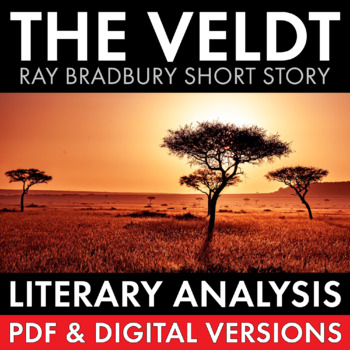The Veldt, Ray Bradbury Short Story Worksheets + Multimedia, PDF & Google Drive
- PDF
- Google Apps™

What educators are saying
Description
If your students can’t go an hour without looking at their phones, they need to read “The Veldt.”
Ray Bradbury’s chilling futuristic short story, “The Veldt,” gives us a glimpse of a world where children love their devices more than their families. Sound familiar? This compelling 90-minute lesson will get your students reading, thinking, and discussing the consequences of our tech-dependent culture. The materials (5-page PDF with links to online media and Google Drive versions of all student handouts) were designed to help middle and high school students sharpen their literary analysis skills while also making personal connections to Bradbury’s eerily prophetic tale.
This lesson for "The Veldt" includes:
1 page detailed suggested lesson plan notes with online multimedia links
One-minute news clip on a related topic (link included)
2 pages of student handouts – one is set of literary analysis questions requiring students to analyze the text as well as make modern connections to Ray Bradbury’s story and the other is a brief "into" activity where they help design a home of the future
2 pages of detailed answer keys to help you easily grade students’ work and guide in-class discussion
All student handouts are included in both PDF and Google Drive format.
Want more Sci Fi lessons at a 20% discount? Click HERE to check out my budget-priced two-week Science Fiction Mini-Unit, which includes this lesson. No need to purchase the item on this page separately if you buy the money-saving bundle of lessons.
Please note: This lesson is NOT included in my 4-week Short Story Unit bundle.
These materials for "The Veldt" also make a terrific lead-in lesson for a larger study of Bradbury's Fahrenheit 451. Click here to find an interactive introductory lesson for F451 and click here for a helpful pack of study question worksheets to guide students through the novel.
Thanks for stopping by!
Cover image credit: Pixabay, Public domain





